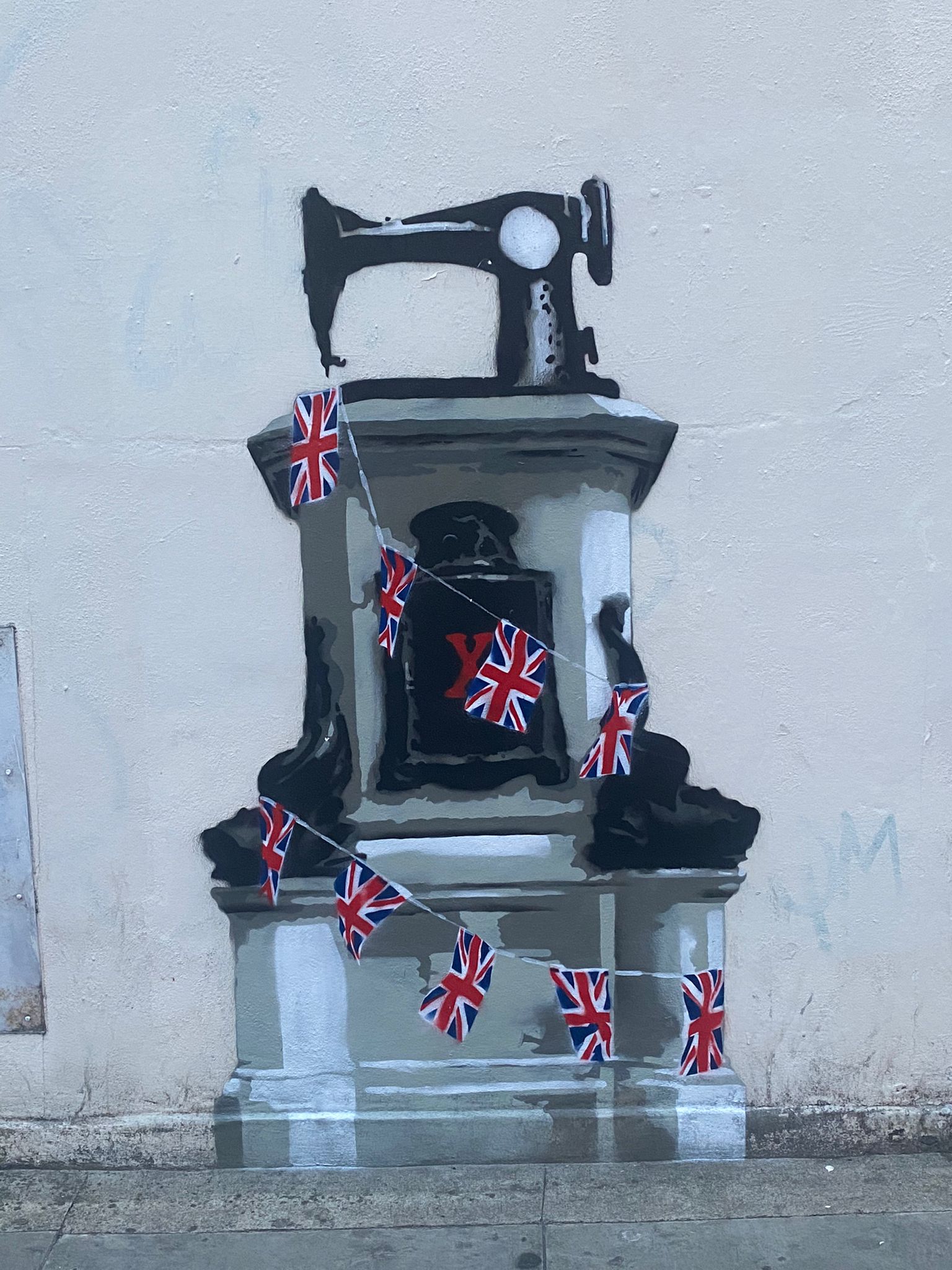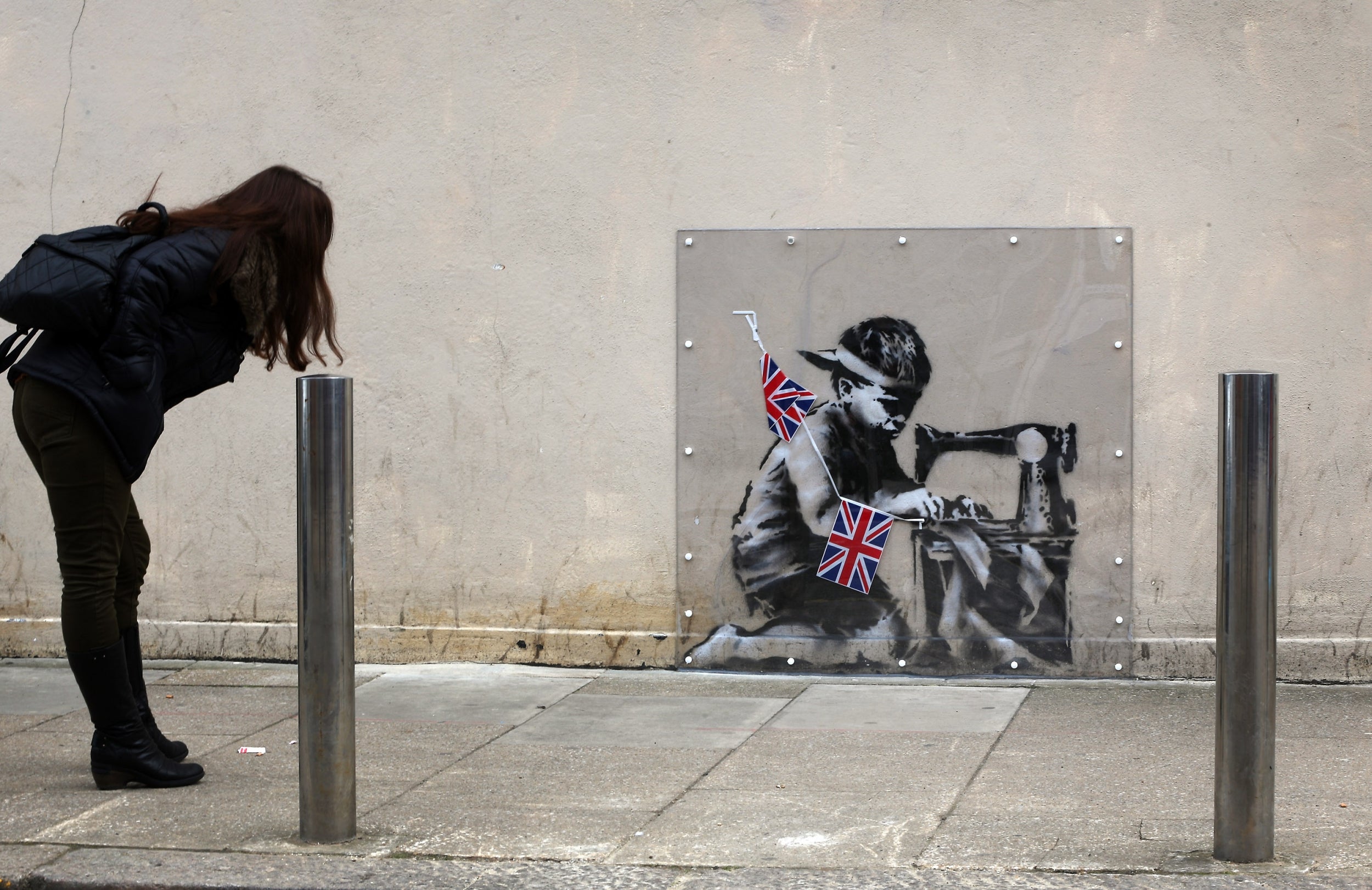Banksy: Artist behind Jubilee mural in Wood Green comes forward
Mural similar to artist’s work appears on side of Poundland ahead of Platinum Jubilee
A provocative mural that drew comparisons to Banksy has appeared on the side of a Poundland store in Wood Green, north London.
Local residents thought the piece, which makes a statement about slavery ahead of the Queen’s Platinum Jubilee, could be as genuine work by the illusive street artist.
However, James Straffon has now been revealed as the local artist behind the piece, which he says is a homage to a previous work by the street artist that appeared in the same place a decade ago.
The artwork, which features Union Flag bunting coming out of a sewing machine on top of the base of the Bristol statue of slave trader Edward Colston – which was famously torn down by Black Lives Matter protesters – was spotted by passers-by on Wednesday.
Straffon told The Indepedent: “I painted Ten Years a Slave on Saturday 14 May. This specific date was chosen by Banksy, in 2012, to place the work Slave Labour on the exact same slab of north London wall as an anarchic response to the then Diamond Jubilee celebrations, and the associated paraphernalia - in this case mass-produced bunting created in far eastern sweat shops.
“At the time of the artwork’s removal, and subsequent inclusion in a Miami auction, I was heavily involved with the brief media frenzy, particularly as our community felt a personal ‘violation’ over the artwork ‘theft’.”
He added: “Ten Years a Slave is my attempt to restore some of the Banksy-effect to the original site, and provide the citizens who pass by a proxy beacon of endorsement.”

Art dealer and Banksy expert John Brandler, of Brandler Galleries in Essex, told The Independent that he believed the new mural in Wood Green could be a genuine Banksy.
He said: “This piece reminds me of early pieces of his that he did featuring a fountain and a statue. That on the front cover of his independent T-shirt company together with the flags from the Olympic piece from 10 years ago the and the intricacy of the stencil work involved I would strongly think that this is done by Banksy. The references, the flags and the location indicate to me that this is Banksy.
“In a year full of interest in anniversaries I think this is Banksy having some fun. I know that he is going to be working incredibly hard at Glastonbury and he’s doing a number of pieces for Glastonbury, which is my only cause for concern - time to do both. This is not a typical piece of street art via an unknown artis,t this is a very sophisticated piece on a poignant place so I would think it is by him.”
However, it has since been proved to be a tribute.
In May 2012, another artwork believed to be by Banksy – Slave Labour (Bunting Boy), showing a young boy hunched over a sewing machine making Union Flag bunting – appeared on the very same wall near Turnpike Lane station.

The chunk of wall, and Slave Labour artwork, disappeared in February 2013. Soon after, another artwork believed to be by Banksy, a rat holding a sign saying “Why?”, appeared next to where the artwork had been.
Slave Labour then popped up at an auction house in Miami but was returned to the UK following a protest. It later sold at auction in London for £750,000.
Straffon’s artwork in Wood Green is next to the rat, which has been covered in a protective case.
It has appeared in the lead up to the Platinum Jubilee celebrations at the start of June, as many campaigners call for the Royal Family to apologise for its historical links to slavery.
Straffon added: “The work itself places the original sewing machine atop the Colston plinth - a recently transformed statue located in Bristol - which had long-angered the city’s enlightened population with its connections to the slave trade.”
Join our commenting forum
Join thought-provoking conversations, follow other Independent readers and see their replies
Comments
Bookmark popover
Removed from bookmarks